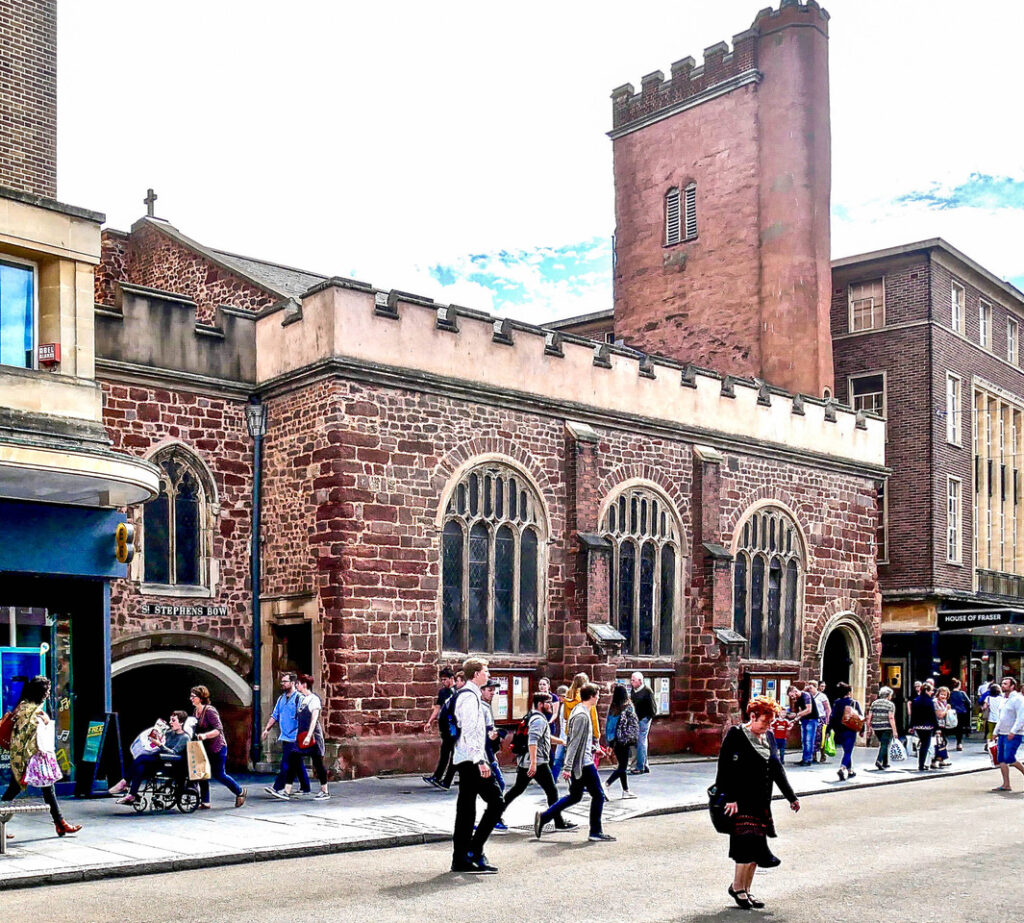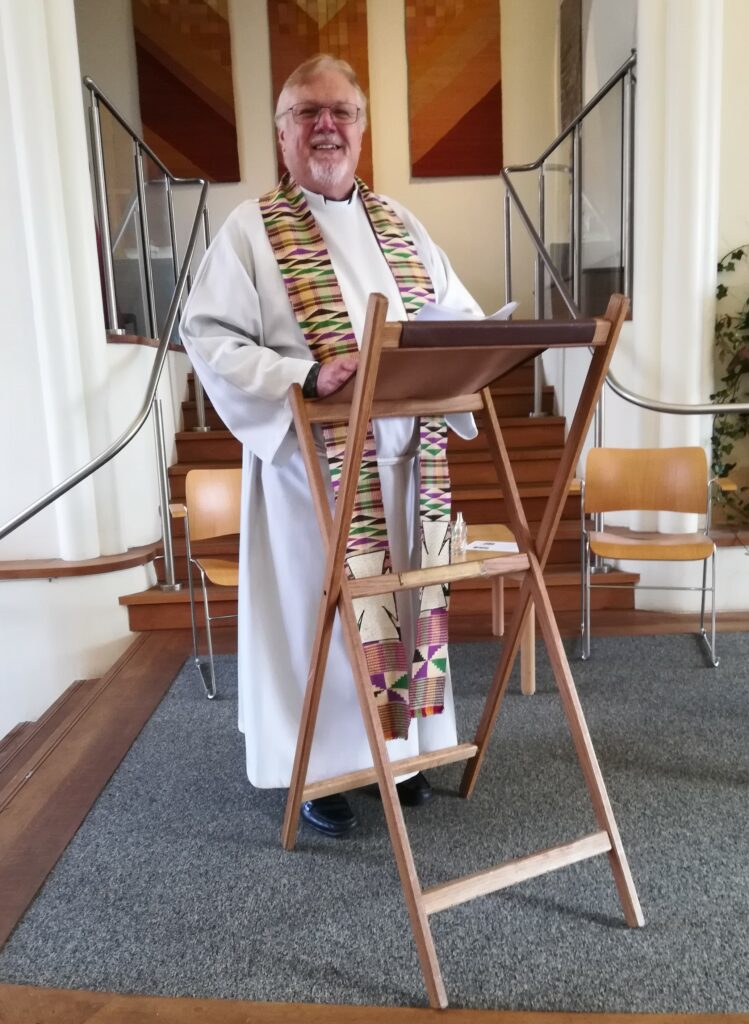Who is Jesus Christ for us today?
On February 4th, 2024, the Second Sunday Before Lent, Richard was invited to preach by the Rev’d Sheila Swarbrick, the Rector of the Central Parish, which now comprises of the historic churches of Exeter’s city centre, dedicated to St Stephen, St Olave, St Petrock, St Pancras, and St Mary Arches. The website for the Central Parish contains many interesting photographs and other details.
St Stephen’s is located just opposite the Guildhall, the centre of civic life in the town since it was completed in 1470. The church itself was first built in stone even back in Anglo-Saxon days, possibly on the site of a previous wooden church – and the account of its history reflects all the turbulent changes through the Norman Conquest, the mediaeval period, the Reformation, the English Civil War, and subsequent centuries, up to and including being bombed by the Luftwaffe’s in the famous air raids in May 1942.
Today it is a beautiful open space (see the banner photograph above), which is used by the congregations of the central team of churches, as well as by other churches for services, as well as for a host of other activities and events from coffee mornings to concerts, exhibitions and meetings, reaching out to the masses of shoppers, workers, visitors and tourists who throng down the ancient High Street.

The readings set for that particular Sunday were two of the most extraordinary reflections on the person of Jesus of Nazareth from the two great theologians of the New Testament – St Paul and St John – in Colossians 1.15-20 and the opening Prologue to John’s Gospel, 1.1-14. These readings proved irresistible to Richard as a biblical scholar with a particular interest in Jesus and the Gospels – and so he took as his theme the central and crucial question of “Who is Jesus Christ for us today?”
The question was actually posed by Dietrich Bonhoeffer in a letter written on 30th April 1944 to his friend, Eberhard Bethge, as Bonhoeffer described his life in a Nazi prison (published in Bonhoeffer’s Letters and Papers from Prison, ed. Eberhard Bethge, New York: Macmillan, 1972). However, this basic question was central to Dietrich Bonhoeffer’s thought throughout his life and work, starting with his lectures in Christology, which he delivered to students at the University of Berlin in the summer of 1933, barely months after Hitler had been installed as Chancellor, and began his anti-Jewish policies. These lectures are not only a clear presentation of Bonhoeffer’s theology but also a daring critique of Hitler’s Nazi ideals. It was ultimately Bonhoeffer’s Christology which led him, unlike many of his contemporaries in the German church to oppose the Nazi agenda, which eventually led to his martyrdom.
As the world is faced with war and conflict today, and all the problems facing the human race from climate change to the refugee crisis, Richard’s sermon concentrated on a detailed exegesis of these two extraordinary passages, written only a few decades after the similar execution of Jesus of Nazareth for what he believed, a faith for which Bonhoeffer died – and we are challenged to live out today!

New Testament reading, Colossians 1:15-20:
He is the image of the invisible God, the firstborn of all creation; for in him all things in heaven and on earth were created, things visible and invisible, whether thrones or dominions or rulers or powers—all things have been created through him and for him. He himself is before all things, and in him all things hold together. He is the head of the body, the church; he is the beginning, the firstborn from the dead, so that he might come to have first place in everything. For in him all the fullness of God was pleased to dwell, and through him God was pleased to reconcile to himself all things, whether on earth or in heaven, by making peace through the blood of his cross
The Gospel Reading, John 1.1-14:
In the beginning was the Word, and the Word was with God, and the Word was God. He was in the beginning with God. All things came into being through him, and without him not one thing came into being. What has come into being in him was life, and the life was the light of all people. The light shines in the darkness, and the darkness did not overcome it.
There was a man sent from God, whose name was John. He came as a witness to testify to the light, so that all might believe through him. He himself was not the light, but he came to testify to the light. The true light, which enlightens everyone, was coming into the world.
He was in the world, and the world came into being through him; yet the world did not know him. He came to what was his own, and his own people did not accept him. But to all who received him, who believed in his name, he gave power to become children of God, who were born, not of blood or of the will of the flesh or of the will of man, but of God. And the Word became flesh and lived among us, and we have seen his glory, the glory as of a father’s only son, full of grace and truth.